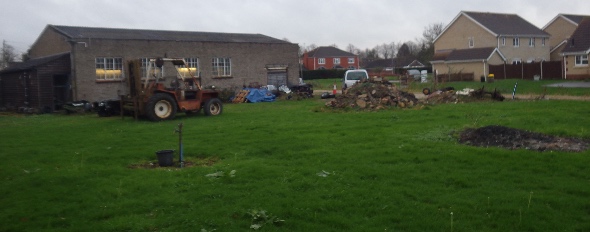Residential Redevelopment of a Workshop, March, Cambridgeshire
Case Study Reference: 15-11-06
Planning Authority: Fenland District Council
Planning Reference: F/YR15/0770/O
Synopsis:
In order to demonstrate that after the development the site could not be classified as ‘contaminated land’ under Part 2A of the Environmental Protection Act a Phase I desk study report was required to support the application for the erection of a dwelling. The site was occupied by an agricultural building, the past use of the site have the potential to impact site soils.
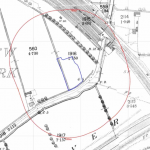 A Phase I desk study report assess the potential for a site to be impacted by contamination, this is undertaken by researching the history of the site and the surrounds as well as a review of information held by regulatory bodies and a site visit.
A Phase I desk study report assess the potential for a site to be impacted by contamination, this is undertaken by researching the history of the site and the surrounds as well as a review of information held by regulatory bodies and a site visit.
The history of the site and surrounds were researched using a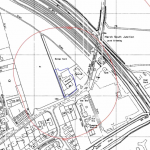 combination of Ordnance Survey (O.S.) maps, street level imagery and aerial plates, this revealed that the site was initially (1886) open land and was developed between 1973 and 1985 when a works was present on the site. A railway line and factory were noted in close proximity to the site.
combination of Ordnance Survey (O.S.) maps, street level imagery and aerial plates, this revealed that the site was initially (1886) open land and was developed between 1973 and 1985 when a works was present on the site. A railway line and factory were noted in close proximity to the site.
Street level imagery indicated the site was occupied by an accident repair specialist.
The planning history of the site was reviewed as part of the desk based research, a number of previous applications were noted and the reports associated with the previous application were located and studied, no salient information was obtained
The published geological maps identified the site as being underlain by the Oadby member which in turn was underlain by the Ampthill Clay Formation. No BGS boreholes were available for the area, which would have provided further information on the ground conditions.
Data provided by regulatory bodies confirmed the presence of two ponds within 250m of the site as well as a scrap yard on the northern boundary.
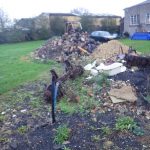 On completion of the desk based research a site reconnaissance
On completion of the desk based research a site reconnaissance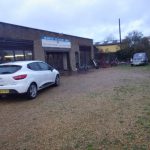 visit was undertaken, this confirmed the southern area was occupied by a workshop with the northern area being landscaped.
visit was undertaken, this confirmed the southern area was occupied by a workshop with the northern area being landscaped.
A previous site investigation report was provided by the client, which was incorporated into the desk study report and was used to refine the preliminary conceptual model.
Once the walkover survey was completed a qualitative risk assessment was undertaken on the potential sources of contamination identified in the desk study report in order to determine if any warranted further investigation, this concluded that the past uses of the site and the adjoining land has the potential to impact site soils and site investigation was required to investigate the potential issues..
Whilst the application was withdrawn the recommendations of the desk study report were approved.

